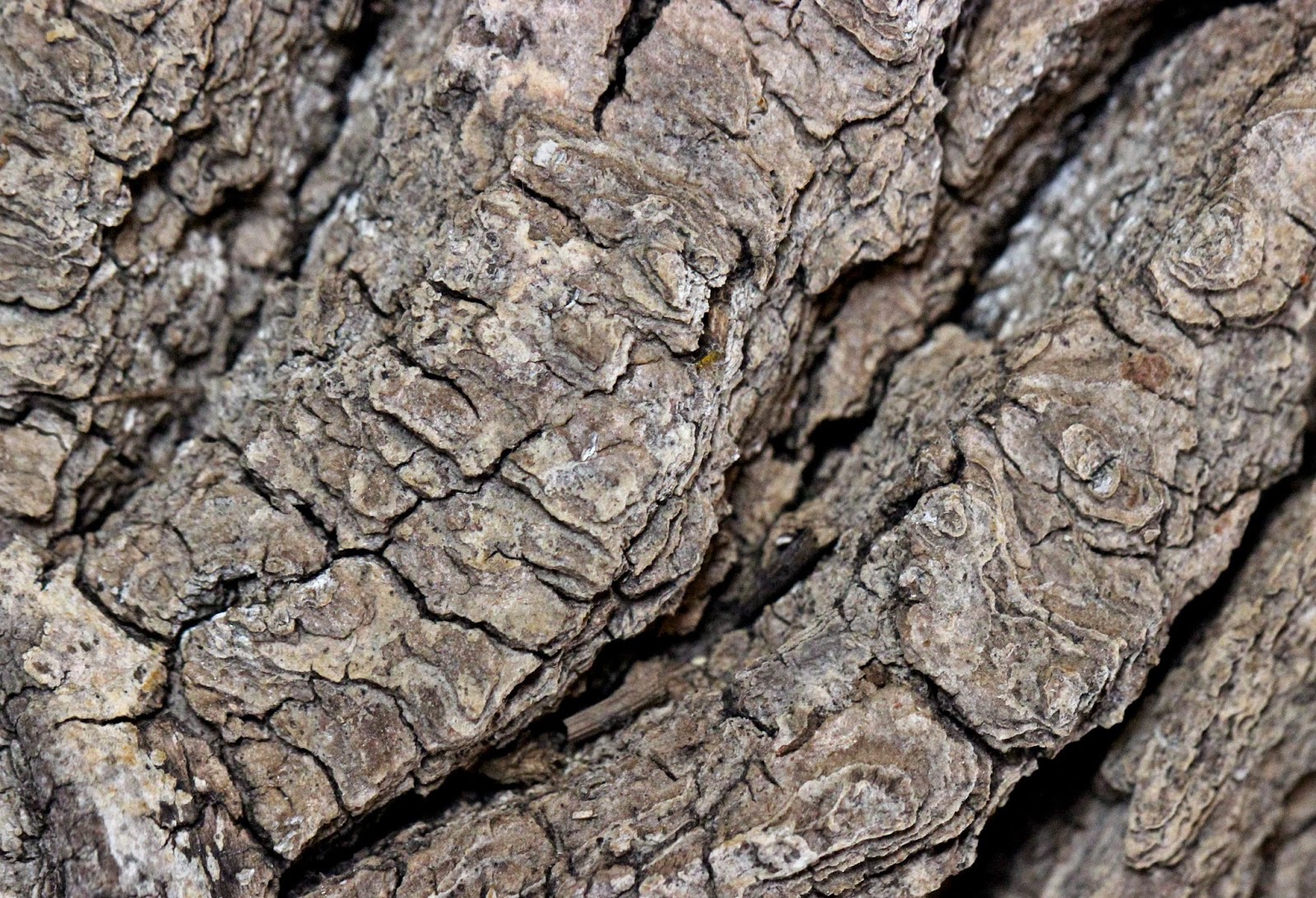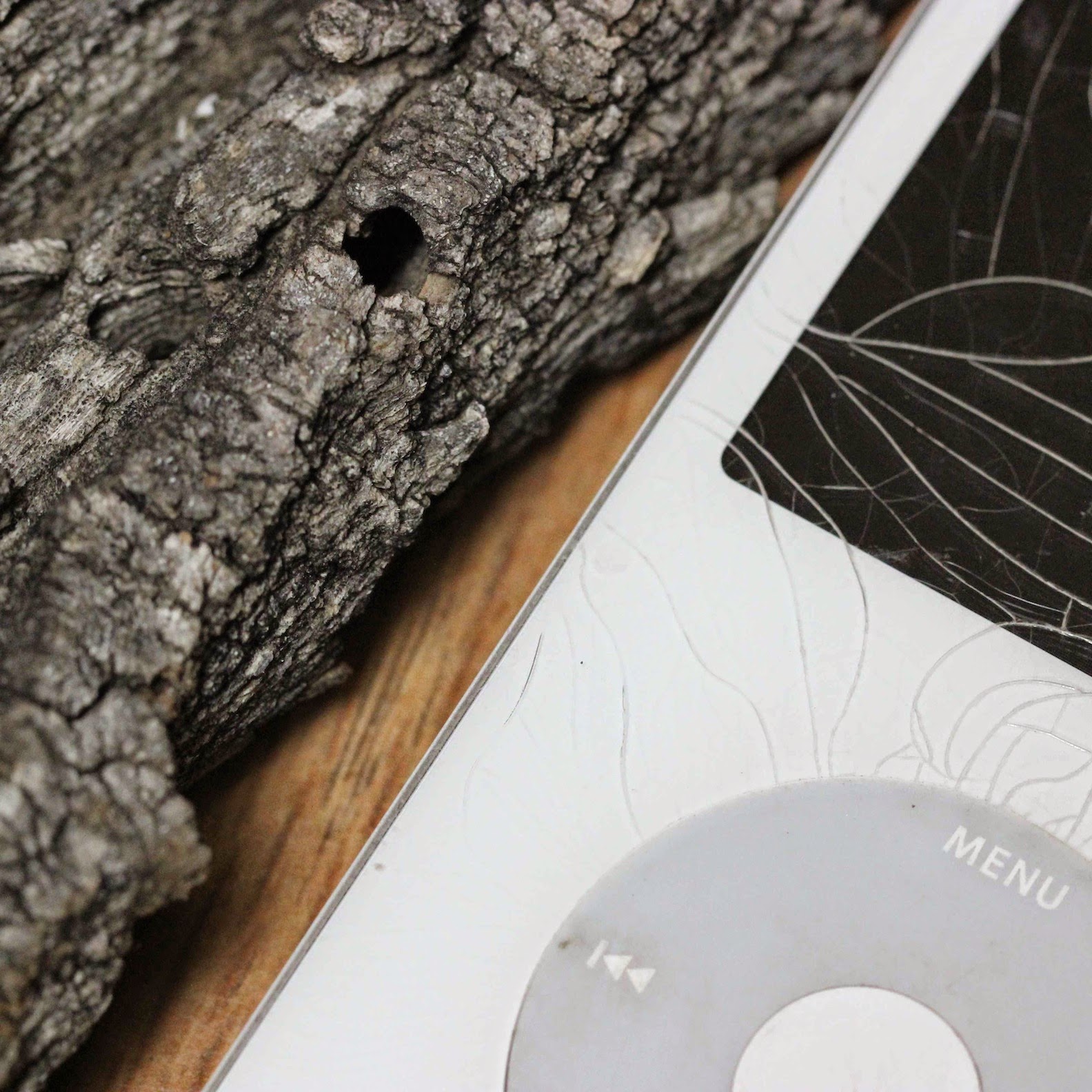tree-following (noun): informal The practice of observing a tree over the course of a year and reporting on it monthly, usually online. ORIGIN: early 21st century, from tree + follow; see also Loose and Leafy
Sorry, just kidding, “tree-following” isn’t in the dictionary (yet). But it’s well-established in my vocabulary, as I've followed trees for two years now. This year I chose a lanceleaf cottonwood (Populus x acuminata) growing on the bank of the Laramie River. It started as a bare skeleton, developed a large green canopy, and now is back to a bare skeleton.
 |
| February 2014. |
 |
| Cottonwoods in full summer dress, June 2014 (my tree on right). |
 |
| My tree and Rich's bench in early December 2014. |
 |
Beautiful old tree in County Durham, UK. Courtesy Phil Gates – The sweet chestnut that refuses to die.
|
The cottonwood’s leaves are long gone, so it’s time to examine the bark. Most noticeable is the difference between young and old. Young bark reminds me of the cottonwood’s cousin, the quaking aspen (also a Populus – P. tremuloides).
With age, dark furrows fracture the pale bark.
 |
I believe there’s a little lichen between the furrows! (orange blotches)
|
Old bark is darker, thick and deeply furrowed. Color varies from brown to shades of gray and almost black.
 |
This bark looks like a Google Earth view of buttes, cliffs and drainages!
|
 |
| Looking up-tree at older and younger bark. |
The robin’s nest Mary spotted in September is easy to see now. Will she (the robin) be back next year? I’ll let you know.
 |
| Nest dusted with snow. |
Looking close, I found entrances to other homes ... whose? woodpeckers?
Probably not woodpeckers ... the entrances are only five millimeters across ;-)
This year’s tree-following has given me a rich collection of cottonwood memories. The most vivid are wind-related, for wind and cottonwoods are inseparable. Wind sends the cottony seeds flying, and makes fresh young leaves dance in the sunshine. Cottonwood leaves whisper in summer breezes, and howl in gales.
I'm not alone in my memories. Those who experience wind in cottonwoods often are left with strong impressions.
I'm not alone in my memories. Those who experience wind in cottonwoods often are left with strong impressions.
“This peculiarity of the foliage of the cottonwood is quite remarkable, so that it is said the air is never so still that there is not motion of cottonwood leaves. Even in still summer afternoons, and at night when all else was still, they [tribes of the Great Plains] could ever hear the rustling of cottonwood leaves by the passage of little vagrant currents of air. And the winds themselves were the paths of the Higher Powers, so they were constantly reminded of the mystic character of this tree.” Melvin R. Gilmore (1919)
“From the upper branches of the cottonwood trees overhead – whose shimmering, tremulous leaves are hardly ever quiet, but if the wind stirs at all, rustle and quiver all day long – comes now and then the soft melancholy cooing of the mourning dove, whose voice always seems far away.” Theodore Roosevelt (1888)
 |
TR at a roundup. Our 26th president loved the American West and all things symbolic of it.
|
It will be another six months before cottonwood leaves emerge and grow large enough to dance, whisper and howl in the wind. Laramie winters are long! So I kept the bark I had brought home to photograph, and put it on a table to remind me of summer days ahead.
Sources
Abbey, Edward. 1956. The Brave Cowboy. Dodd, Mead & Co.
Cather, Willa. 1915. The Song of the Lark. Houghton Mifflin Co.
Gilmore, Melvin R. 1919. Use of plants by the Indians of the Missouri River region. Bureau of American Ethnology.
Roosevelt, Theodore. 1888. Ranch Life and the Hunting Trail. The Century Co.
For more tree news visit December's gathering, kindly hosted by Lucy.









A brilliant read, Hollis. I liked your 'bark' image and dictionary entry! It's been nice to learn about your cottonwood tree this year.
ReplyDeleteThanks, Tim! As always, I really appreciate your encouraging feedback.
DeleteNo problem! Thank you for another year of interesting reads. I hope you have a lovely Christmas.
DeleteThanks ... and best wishes to you and yours!
DeleteThis is a fun, informative and well written post and I am glad to have found it. I loved the history and quotes behind the tree!
ReplyDeleteThanks very much, Lee. This tree-following has been such a great thing ... I hope we do it again next year.
DeleteI' ve enjoyed your informative posts about your cottonwood tree. It has interesting bark. You are like me, I like to collect stones, cones, and bark and bring them home.
ReplyDeleteah yes ... irresistible aren't they!
DeleteI didn't know cottonwoods until I met your blog. Beautiful, aren't they? I don't think we have any of this particular poplar in the UK, but I am prepared to be told otherwise - perhaps there is one planted in a park somewhere?
ReplyDeleteI particularly like those three-in-a-row pictures of the changing seasons.
Lovely words and images - keep up the good work in 2015!
All the best :)
Thanks so much, squirrelbasket. And I hope we all meet again in 2015!
DeleteLovely photos. I too find the bark of trees fascinating,
ReplyDeletethanks, CGP. It's interesting how bark makes me slow way down to look close ... not my usual MO, but a good one. Cheers.
DeleteThank you so much for visiting my Silver Birch. What a lovely idea to look up what others have said about the Cottonwood. Really enjoyed the post ... and photos.
ReplyDeleteThank you, Caroline. Happy holidays, and "see" you next year!
Delete